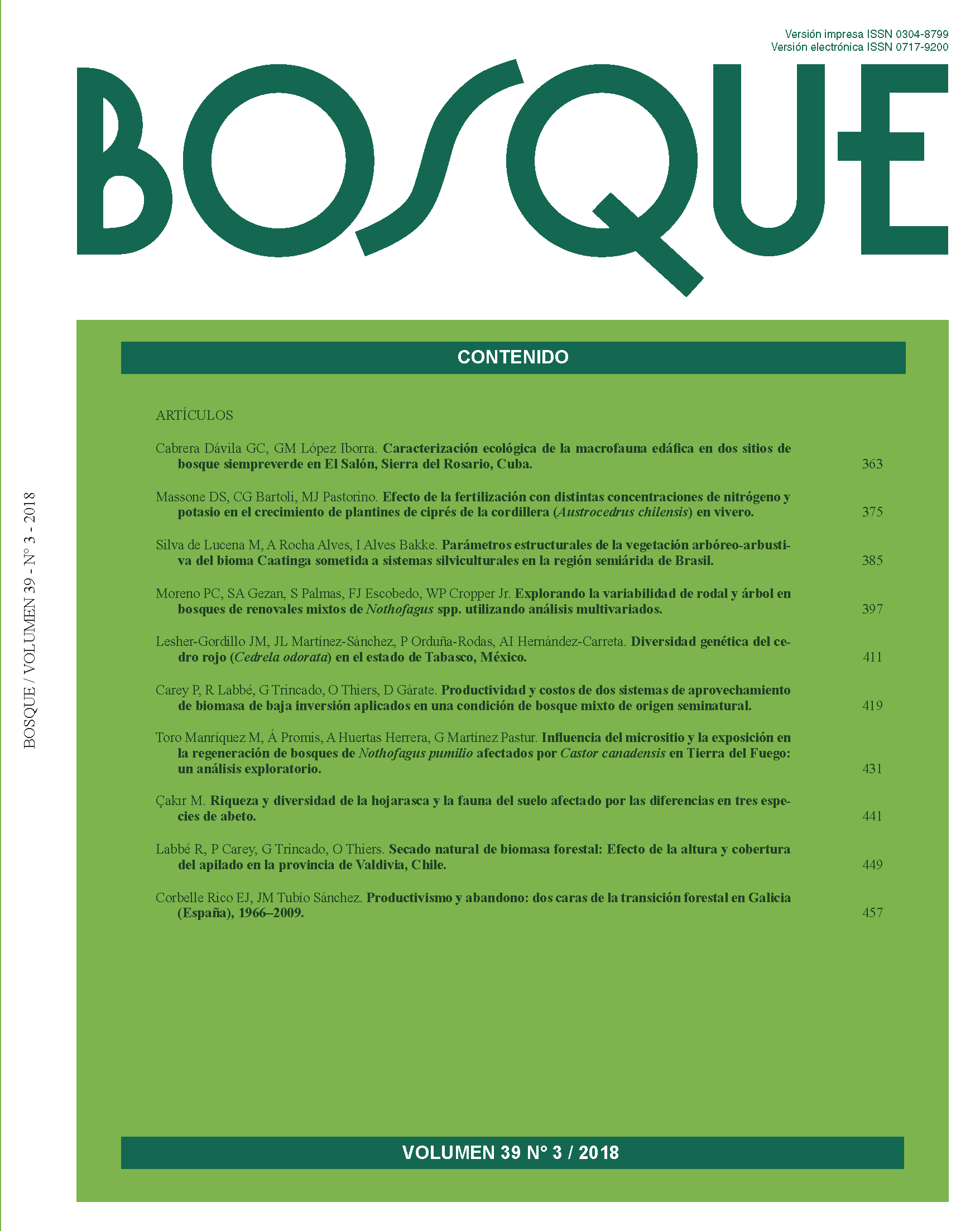Main Article Content
Dec 11, 2018
Abstract
The red cedar (Cedrela odorata) is a valuable timber species. It is currently listed as a protected species, as well as on the IUCN red list due to the decline of its wild populations mainly due to habitat fragmentation and deforestation. The aim of the present study was to estimate the structure and genetic diversity of red cedar populations in the state of Tabasco, Mexico. Sixty eight samples of C. odorata from the states of Tabasco and Chiapas were analyzed. The DNA was extracted with the CTAB method (cetyl trimethyl ammonium bromide). DNA amplification was performed using 10 microsatellite loci (SSRs), nine of them previously reported as polymorphic for the species and one designed (AB0507) with the program Primer 3. For the analysis of the resulting data, NTsys, GenAlex and Cervus pc programs were used. Genetic differentiation was high (Fst = 0.419) and genetic diversity was low (Ho = 0.297). Compared with other studies, it showed less genetic diversity of the species, indicating superior genetic erosion, presently. With this study, it is possible to suggest more suitable populations for the extraction of germplasm and, thus, counteract the loss of genetic diversity of this species in the region.


